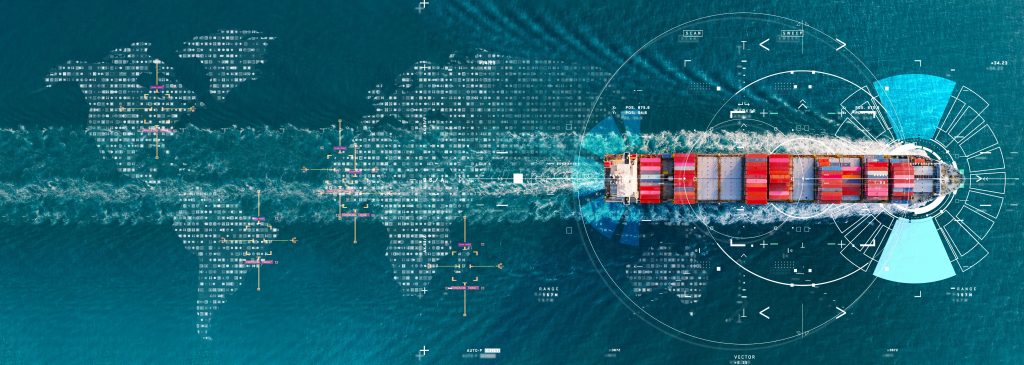7 Tips for Managing Customer Logistics and Shipping Expectations
In the dynamic world of business, efficient logistics is the key to success. Smooth logistics not only reduces delays and enhances product availability but also builds trust with customers, fostering loyalty. In order to thrive in today’s market, all businesses should prioritise customer satisfaction through effective logistics.
What is Logistics?
Logistics is the industry that manages the complex flow of goods and services from their point of origin to the end consumer. Though they might not always be aware of it, most people interact with the logistics industry through online shopping. It involves multiple levels of planning, coordination, and optimisation of certain processes like transportation, warehousing, and inventory management. Picture a carefully choreographed dance where suppliers, manufacturers, distributors, and retailers coordinate harmoniously to ensure that in the end, all your packages get delivered.
The Importance of Customer Expectations in Logistics
Customer expectations play an important role in logistics because they essentially shape the entire supply chain process. When customers place orders, they have certain expectations regarding timely delivery, the condition of the goods, and overall service quality. These expectations are what drive customers to make purchases in the first place, playing a small but vital role in the global economy. Exceeding customer expectations is crucial for the success and sustainability of any logistics operation. Failing to do so can result in a loss of trust in your business and subsequently, a drop in revenue.

Tips for Managing Customer Expectations
Advances in technology and communication have made it easier to shop online than ever before. The COVID-19 pandemic has also played a role in the recent increase in online commerce. Now that online shopping is part of everyday life, customers expect prompt deliveries, accurate tracking information, and flexible options. Here are seven logistics and shipping tips for managing customer expectations.
1. Provide Estimated Shipping Times
By giving an estimated shipping time at the point of purchase, you are providing your customer with transparency and allowing them to plan ahead for upcoming deliveries. Along with providing an estimated shipping time, you should also maximise the window of estimation. For example, if there is an estimated window of 1-3 weeks for shipping and delivery, show your customer that the estimated shipping time is three weeks. Both strategies will reduce anxiety for your customer, ultimately leading to greater customer satisfaction.
2. Offer Transparent Communication
In the world of logistics and customer service, transparent communication involves keeping your customer updated on the status of their order, shipment, delivery, and possible delays. You can accomplish this by using email, text messages, or social media. Offering your customers the ability to track deliveries from home is another useful strategy to maintain open communication with your customers.
3. Use Incentives to Drive Sales
Many companies use delivery incentives, such as minimum orders for free or next-day shipping. The benefits of this strategy are two-fold. First, it gives the customer a compelling reason to spend more money on your products. Second, it fulfills the customer’s need for prompt or inexpensive shipping. While it may seem counter-intuitive to ask customers to spend more money, these incentives can actually increase customer satisfaction.
4. Provide More Options
Customers located in different regions may have different shipping needs and expectations. Some customers may require their orders urgently, while others may be more concerned with convenience. In addition, customers must also weigh their needs against their available budget. Multiple shipping options will make it possible to accommodate the needs of many different types of customers.
5. Automate Back-end Processes With APIs
APIs, or “application programming interfaces,” are specialised applications that allow different computer programs to talk to each other and share information, enabling them to work together smoothly. These applications make it possible for businesses to automate certain processes like offering dynamic shipping rates, verifying addresses, processing orders, and more. By integrating APIs into the operation of your business, you can increase efficiency, reduce human error, and provide better customer service.
6. Prevent Supply Chain Bottlenecks
Supply chain bottlenecks occur when goods or services are hindered from moving onto the next step of the supply chain. Bottlenecks can happen for many reasons, such as back-ordering, poor inventory management, or delays in production. In most cases, supply chain bottlenecks will directly impact shipping and delivery times, which will contribute to an unhappy customer experience. You can avoid bottlenecks by leveraging APIs to keep track of inventory and stock and planning ahead for busy seasons, such as Christmas or the back-to-school shopping season.
7. Solicit and Use Customer Feedback
By actively seeking input from customers, you can identify areas for improvement and apply that feedback to improve and increase efficiency. This customer-first approach not only addresses specific concerns but also demonstrates a commitment to continuous improvement. Additionally, positive feedback reinforces successful logistics practices, boosting confidence and loyalty. Some methods for gleaning feedback include satisfaction surveys, focus groups, and social media.
Article by Taylor McKnight, Author for Freight Finder
Speak with a member of the IoSCM Team to find out how our professional qualifications, membership packages, and resources can help you and your organisation in 2024. Call 0800 1422 522 today.

